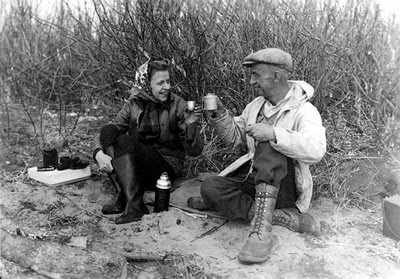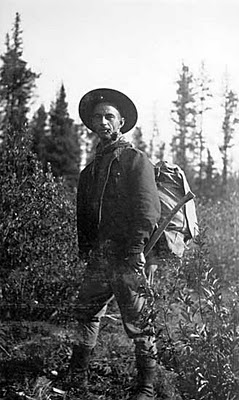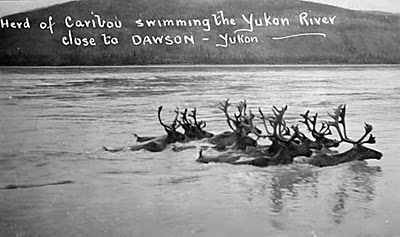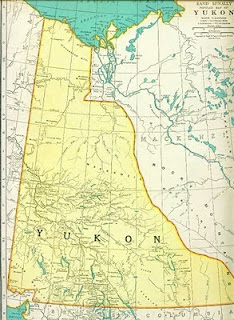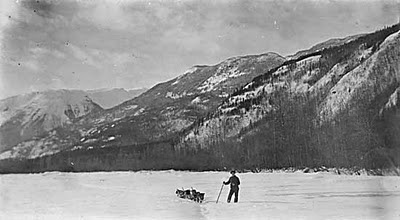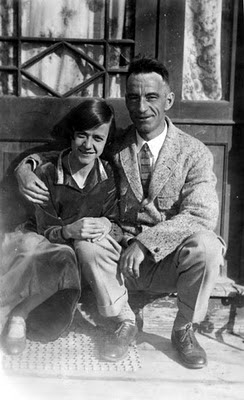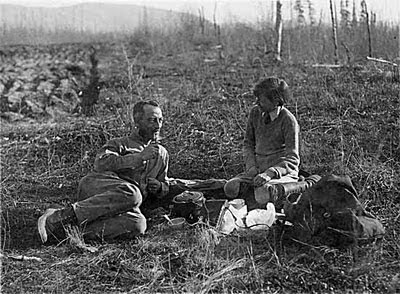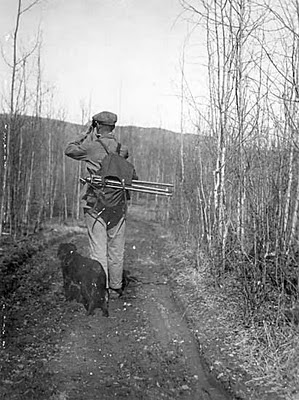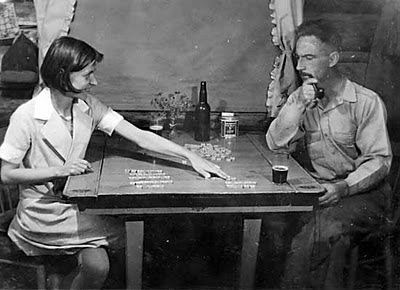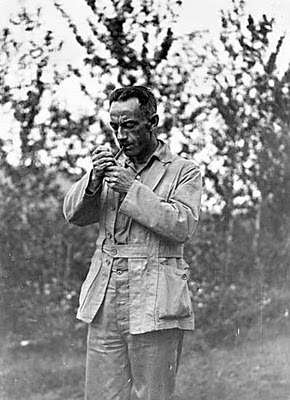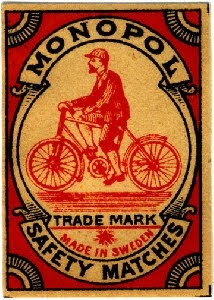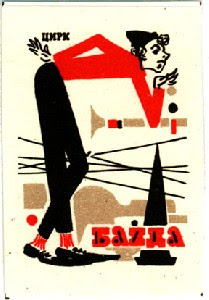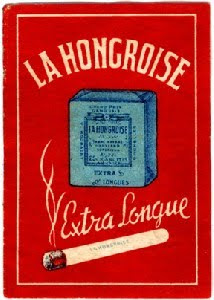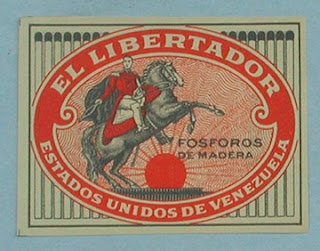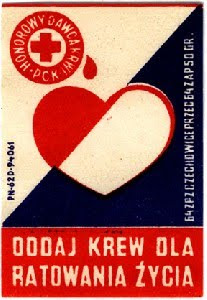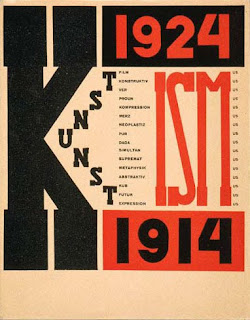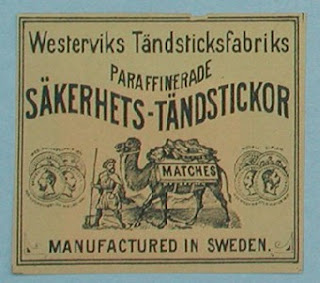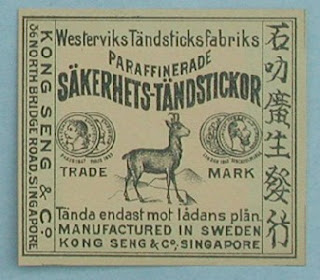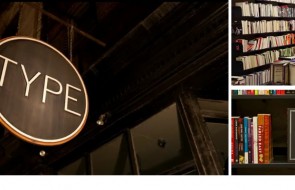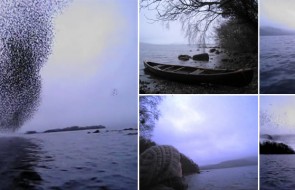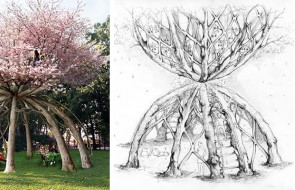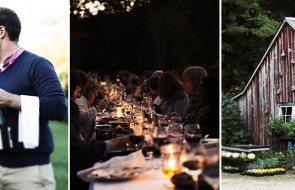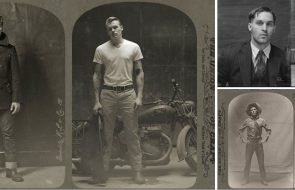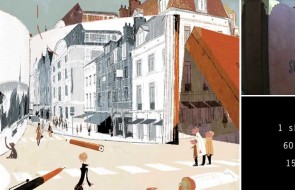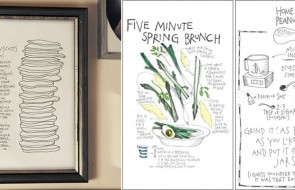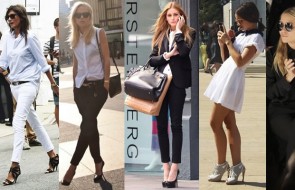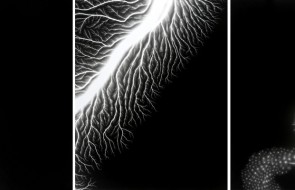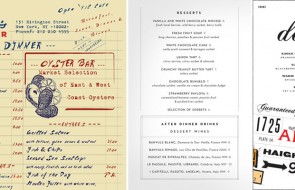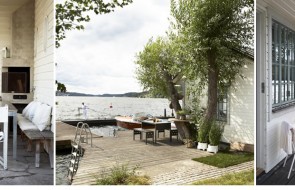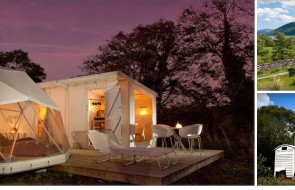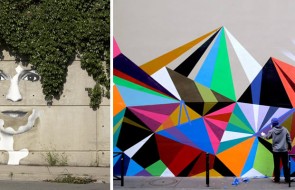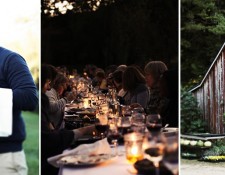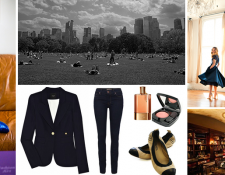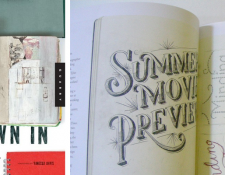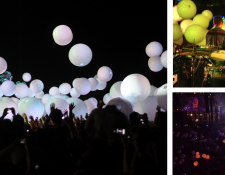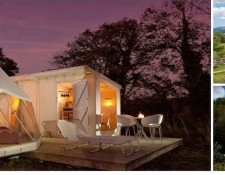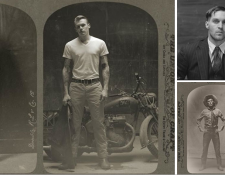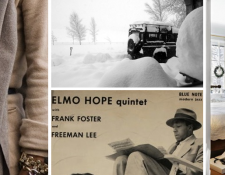The Life & Times of Claude and Mary Tidd
“Claude Tidd. Born in England, 1886. Left for the Yukon at age 24. 20 years as a Royal Mountie. Married Mary Ryder in 1925.”
“Avid outdoorsman, photographer, musician, writer and film maker. Died in Dersingham, England, 1949. A frontier renaissance man. The real deal.”
Makes me want to have to go on some adventures. And to take great pictures while doing it!
“To read more on Claude and Mary, click HERE. To view more of Claude’s photos from his life in the Yukon, click HERE.”
Secret Forts blog here.
Wine Label Journal
Vintage Matchboxes
The dealer, Style de Vie, here.
The Original
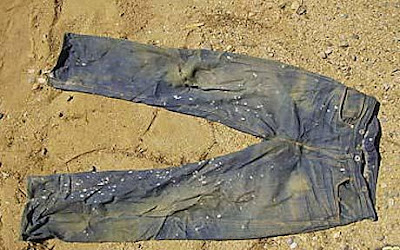 Original Levis from 1898 found recently in a California goldmine. How cool is that?! Sold on eBay for $36,099.
Original Levis from 1898 found recently in a California goldmine. How cool is that?! Sold on eBay for $36,099.
Found here.
Henry Philip Dodd’s Grand Tour
While visiting my colleague Jill at her home in Somerset, England, we got to talking about our favorite flea market finds, and she pulled out this old passport she found many years ago. The scans here don’t nearly do it justice, as you don’t get to experience the smell of the cracking old leather case or the onion-skin texture of the fragile old paper, but I still thought it was worth sharing for the musings it sparks.

Physically, I loved it for the handwriting, embossed stamps, and wax seals [!] that came with every point of entry. Official documents used to receive so much more attention to aesthetic detail. Now passports just get some boring, barely legible stamp. Can you imagine getting a calligraphy-like note from an immigration officer in those miserable customs halls in airports now? Hardly. But, nor would women have traveled in sweatpants and Uggs [pet peave] with a rolly bag. People practically deserved a fancy entry on their passport since they were dressed up so nicely to travel, had beautiful luggage in hand, and had arrived on a stylish steamer. No one would dare put a boring stamp on someone’s passport if they’d arrived in such style.
 A Goyard steamer trunk. Now that is traveling in style.
A Goyard steamer trunk. Now that is traveling in style.
Beyond just the aesthetics of it, I got immensely carried away imagining this man using the passport for all the clues I could possibly gather, Sophie Calle-style, and it lead to some sprawling tangents. It’s amazing how much information about the man and his time can be gathered from one object. This gets long, so if you get bored, just skip to the end. The end idea is worth reading.
click the jump for the rest…
1. Basics: The passport belonged to one Reverend Henry Philip Dodd, and it tracks his travels through Europe in 1854. The first page, shown at the top, unfolds out of the passport and is a sort of letter, that I assume was a standard intro on a passport, from the Earl of Clarendon, letting us know he is from Clarendon, near Salisbury in the south of England. It also notes that he is travelling with his wife, but it doesn’t mention her name. Typical. She probably didn’t even get her own passport. She was just an appendage on his. A nameless appendage. Like a pegleg.
2. Given that he was a reverend and also wealthy enough to travel with his wife, I think it is safe to assume firstly, that he had family money, and secondly, that he was a younger son in his family since the oldest son would have taken over the family estate, another son would’ve been directed into a profession, another son into the military, and finally the youngest sons into the clergy.
3. All of the stops are consecutive – it is one long journey and he doesn’t seem to reenter England between stops, but rather just hops from one destination to the next. One thing, among many, that is so neat about this old passport, is that it notes every city he goes to, not just countries, making the details of his journey much easier to imagine. I would suppose that this was because he was travelling by ship and train, and these defined ports of entry allowed easier tracking of travellers than is possible now with all of our possible modes of transportation.
All of that to say, he was most likely on a “Grand Gour” – the old tradition of upper class Brits, and later Americans, to tour Europe after graduating from university, “In search of,” as the NYT notes, “art, culture, and the roots of Western civilization. With nearly unlimited funds, aristocratic connections and months or years to roam, they commissioned paintings, perfected their language skills and mingled with the upper crust of the Continent.”
I’ve always been fascinated by the idea of the Grand Tour, and I found it interesting that the wikipedia entry notes that the “Grand Tour had more than superficial cultural importance; as [historian] E.P. Thompson stated, ‘ruling-class control in the 18th century was located primarily in a cultural hegemony, and only secondarily in an expression of economic or physical power.’” In the same way that today the upper-class maintains power through the cyclical principle of “it’s not what you know, it’s who you know,” during the era of the Grand Tour, the gentry maintained a their “ruling-class control” through cultural power partially acquired through the education provided by such travel.

4. From Google, I learned that our Reverend Dodd published a book! The Epigrammists. Essentially, it is a collection of epigrams from throughout history. So Dodd was poetry lover!
His introduction on epigrams is very well written:

We translated a lot of epigrams in a Latin literature class in high school, and I found one of my favorites included in his Latin chapter – “A Well-Spent Life” by Martial.
r=”0″ id=”BLOGGER_PHOTO_ID_5394462789091911362″ src=”http://4.bp.blogspot.com/_pJoIk7pwFMM/Stz7U1ni5sI/AAAAAAAAAow/MGCnpg5Y0HE/s400/A+well+spent+life.png” style=”cursor: pointer; display: block; height: 283px; margin: 0px auto 10px; text-align: center; width: 400px;” />
The more I learned about Dodd, the more interested I became. From the page of the passport below, we learn that he stopped in Chiavenna, on the border of Italy and Switzerland.
So I looked up Chiavenna. Don’t you want to go there? Which brings me to my ultimate daydream that stemmed from all of this… Wouldn’t it be cool to take his passport and re-trace his journey and document it? Going from place to place on the same days of the year that he did, so that even the weather would be similar? And to do more research beforehand to figure out how he likely would have gotten from place to place – train? Boat? And to go according to the same means?
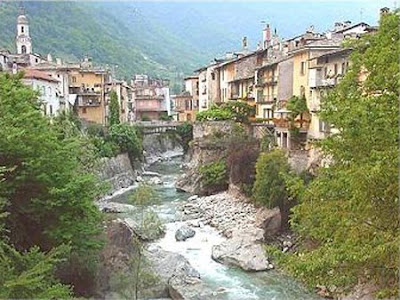
And maybe to trace his family history and find out where his descendants are today, and show them the documentation of the trip after it’s all over? They might have never known he went on this trip! If someone found me and told me they’d found my great-great-grandfather’s passport and retraced his travels? …Whoa. So cool.

